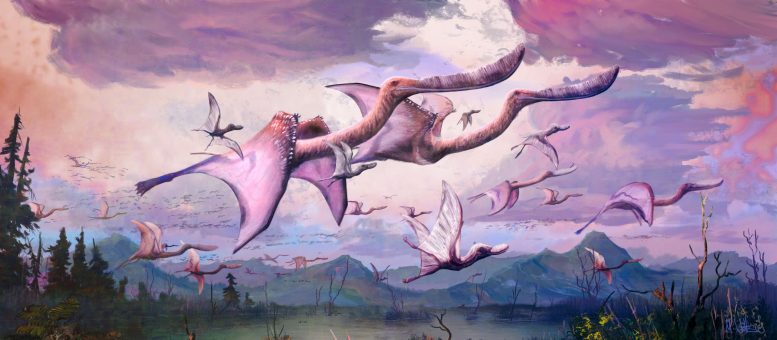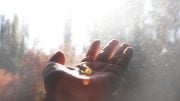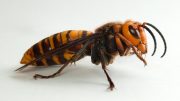
The attached image shows a flock Pterodaustro guinazui. Credit: Dr. Mark Witton
Newly-hatched pterosaurs may have been able to fly but their flying abilities may have been different from adult pterosaurs, according to a new study.
Pterosaurs were a group of flying reptiles that lived during the Triassic, Jurassic, and Cretaceous Periods (228 to 66 million years ago). Due to the rarity of fossilized pterosaur eggs and embryos, and difficulties distinguishing between hatchlings and small adults, it has been unclear whether newly hatched pterosaurs were able to fly.
Researchers from the Universities of Portsmouth and Bristol, along with paleontologist Darren Naish, found that hatchling humerus bones were stronger than those of many adult pterosaurs, indicating that they would have been strong enough for flight.
In the study, published in Scientific Reports, the researchers modeled the flying abilities of hatchlings using previously obtained wing measurements from four established hatchling and embryo fossils from two pterosaur species, Pterodaustro guinazui and Sinopterus dongi. They also compared these wing measurements with those of adults from the same species and compared the strength of the humerus bone, which forms part of the wing, of three hatchlings with those of 22 adult pterosaurs.
Study co-author Dr. Mark Witton from the University of Portsmouth said: “Although we’ve known about pterosaurs for over two centuries, we’ve only had fossils of their embryos and hatchlings since 2004. We’re still trying to understand the early stages of life in these animals. One discussion has centered around whether pterosaurs could fly as hatchlings or, like the vast majority of birds and bats, they had to grow a little before they could take wing.
“We found that these tiny animals — with 25 cm wingspans and bodies that could neatly fit in your hand — were very strong, capable fliers. Their bones were strong enough to sustain flapping and take-off, and their wings were ideally shaped for powered (as opposed to gliding) flight. However, they would not have flown exactly like their parents simply because they were so much smaller: flight capabilities are strongly influenced by size and mass, and so pterosaur hatchlings, being hundreds of times smaller than their parents, were likely slower, more agile fliers than the wide-ranging, but less maneuverable adults.”
Dr. Liz Martin-Silverstone from the University of Bristol’s School of Earth Sciences said: “There have been several debates about whether juvenile pterosaurs could fly, but this is the first time it’s been studied through a more biomechanical point of view. It’s exciting to discover that even though their wings may have been small, they were built in a way that made them strong enough to fly.”
The researchers found that while hatchlings had long, narrow wings suited to long-distance flight, their wings were shorter and broader than those of adult pterosaurs, with a larger wing area relative to hatchling mass and body size. These wing dimensions may have made hatchlings less efficient than adult pterosaurs at long-distance travel, but may have resulted in them being more agile fliers, enabling them to suddenly change direction and speed.
The authors speculate that the agile flying style of hatchling pterosaurs may have enabled them to rapidly escape predators and made them better suited to chasing nimbler prey and flying amongst dense vegetation than adult pterosaurs.
Dr. Witton said: “That gives us a lot to think about with regard to flying reptile ecology. How independent were the hatchlings from their parents? Did flight style influence habitat choices, and did these change as pterosaurs grew? There’s still a lot to learn about the life histories of these animals, but we’re confident that, whatever they were doing as they grew up, they were capable of flying from the moment they hatched.”
Reference: “Powered flight in hatchling pterosaurs: evidence from wing form and bone strength” by Darren Naish, Mark P. Witton and Elizabeth Martin-Silverstone, 22 July 2021, Scientific Reports.
DOI: 10.1038/s41598-021-92499-z









Flying crocodilian is this a joke.this is very aquatic dinosaur that has gator tail the gator tail is a aquatic tail all ways has been but it’s not a tetanuran so it’s okay .the other aquatic dinosaur the duck face duck bill dinosaur has gator tail allso has the mesoeucrocodylia voay armor crest some of them have smooth skin like pterosaur clearly aquatic feature in reptile more so in mesoeucrocodylia whale mesoeucrocodylia have this feature pterosaur allso have Webb toes it’s nose move to the back fuse to the antorbital fenestra and long snout clearly a aquatic feature .early pterosaur has tetanuran dinosaur bipedal tail later pterosaur has gator tail clearly getting better aquatic allso later pterosaur has kink snout .clearly pterosaur is not a tetanuran with a palate teeth the early pterosaur did not have kink snout like most tetanuran because tetanuran dinosaur stop eating fish and are mostly land animal that why kink snout goes away the first thecodont we’re semi aquatic they had smooth skin then move more to land .clearly pterosaur is a dinosaur with serrated teeth same occified tendon as duck bill dinosaurs allso has fuse bird tail found in a duck face tetanuran dinosaur .clearly voay crest aquatic feature flying animal do not need heavy skull that why bird feather crest is made out of feather or rooster comb is made out of skin not the heavy armor crest you find in flightless bird and pterosaur voay .if pterosaur is not a dinosaur explain advance feature a tetanuran bipedal tail 4 finger dinosaur do not have this feature early pterosaur lack kink snout .pterosaur was a sting ray mimic .wing is convergent evolution feature found in aquatic animal like sting ray pterosaur Nile crocodile crocodile wing is smaller than pterosaur made out of same thing .gator lack wings.pterosaur brain is biggest in dinosaur it’s reptile so brain is smaller than birds .the brain size probaly do to wing size manti ray wings are bigger than sting ray they are faster likely pterosaur was fast like most dinosaur common feature in dinosaur we know Nile crocodile is fast .wing is some sort of speed booster I think pterosaur has synsacrum found in dinosaur and birds gator type mesoeucrocodylia .pterosaurs clearly was very aquatic dinosaur the aquatic spinosaurus have fossil of them in there stomach they prey on them and made them extinct .all pterosaur bird feature are convergent evolution because it’s a fast animal .clearly pterosaur is close to tetanuran .lack of fourth trochanter allso found in dinosaur protosuchus types they have smooth skin likely aquatic too really is no different between dinosaurs gator pterosaur when you know the facts they all are dinosaur only one is greatest dinosaur ever the gator the won who survive and won with the greatest weaponry .